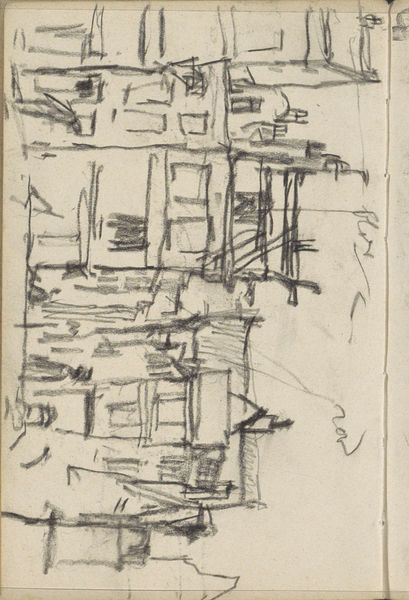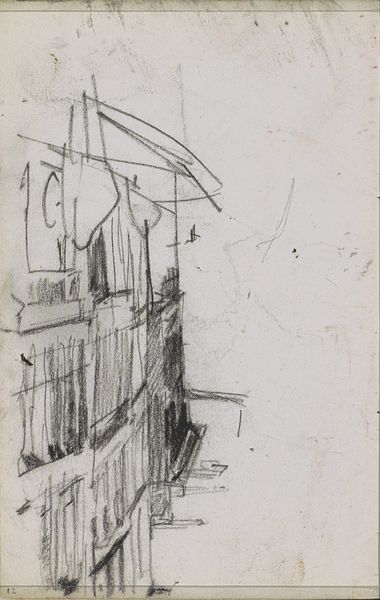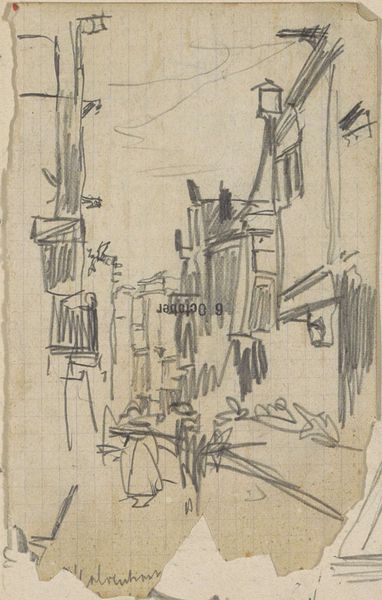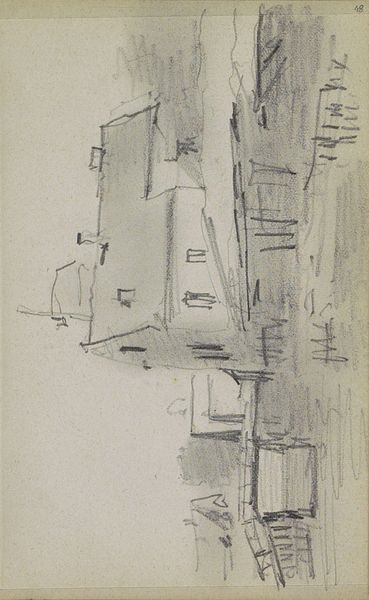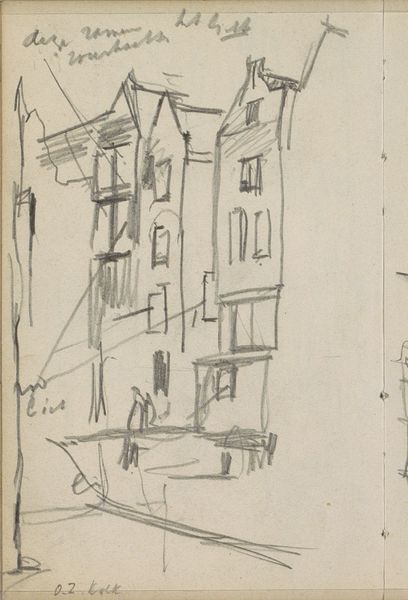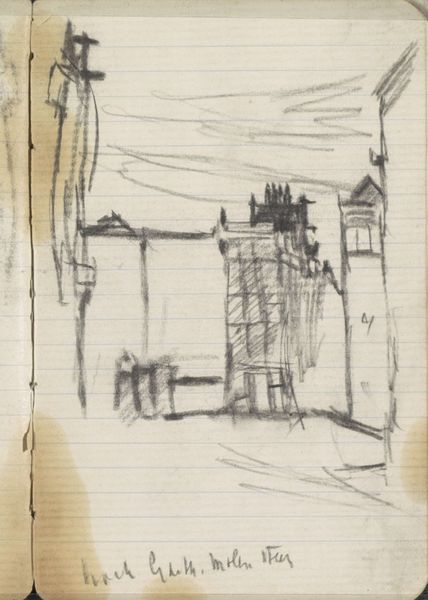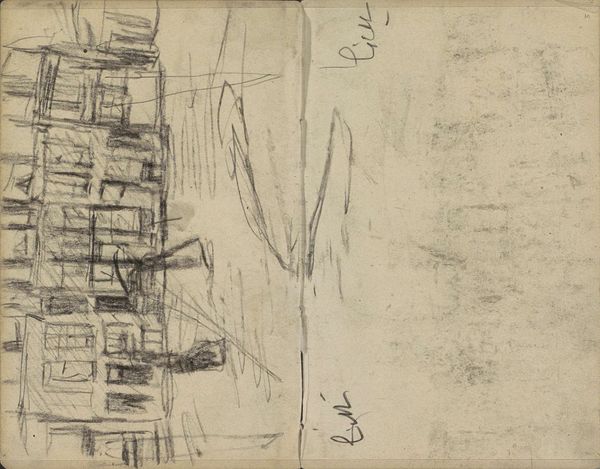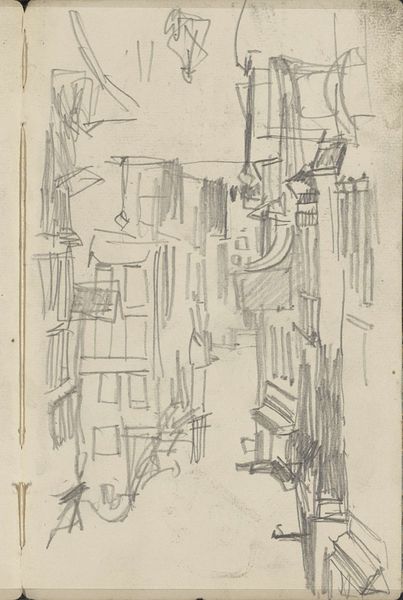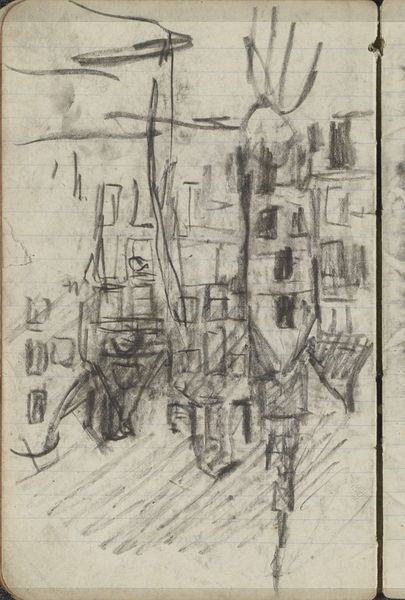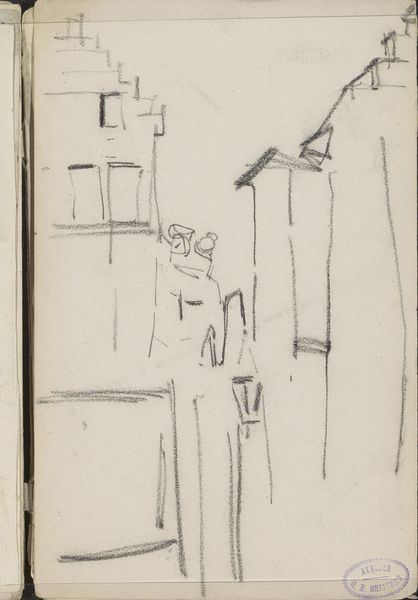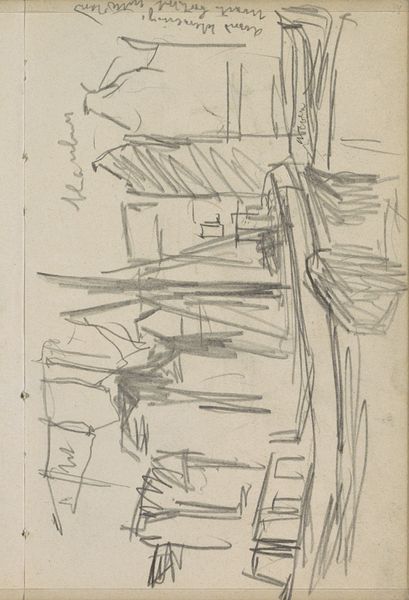
drawing, pencil
#
drawing
#
quirky sketch
#
impressionism
#
sketch book
#
personal sketchbook
#
idea generation sketch
#
sketchwork
#
pen-ink sketch
#
pencil
#
sketchbook drawing
#
cityscape
#
storyboard and sketchbook work
#
sketchbook art
#
initial sketch
Copyright: Rijks Museum: Open Domain
Curator: This intriguing sketchbook page, titled "Gezicht op een straat in Zuid-Holland" or "View of a Street in South Holland," comes to us from George Hendrik Breitner, circa 1882. The work, executed in pencil, is currently held in the Rijksmuseum's collection. Editor: It feels incredibly immediate, doesn’t it? Almost like catching a fleeting thought. The pencil lines are so raw, the forms just barely defined... It evokes a sense of impermanence and the rush of urban life. Curator: Absolutely. Considering Breitner's later association with the Amsterdam Impressionism movement, this drawing foreshadows his interest in capturing the everyday experiences of city dwellers and I want to underscore the representation of the streets and working class here as opposed to the glorification of bourgeois life or even countryside depictions that characterized other art scenes. It shows him, even in this preliminary state, centering a different class of person and geographic location, a significant choice in late 19th-century art. Editor: I find the sketch deeply evocative of the architectural spirit. Note the almost abstracted yet instantly recognizable steeple form piercing the cityscape and the subtle lines and shapes depicting windows and archways below. It communicates an aura or cultural mood around this scene – even without meticulous detail – and captures a deep connection to cultural memory by evoking specific religious imagery combined with quotidian structures in the architecture. Curator: What you bring up in relation to the steeple has some resonance here given the relationship to state power versus personal narrative or even what is "worth" documenting or capturing – Breitner focuses on what has social meaning today and how that breaks with previous established traditions. The sketchbook as an inherently private or personal object of art making begins to evolve as Breitner uses this private space as a site of documentation, critique and future planning. Editor: Exactly! Breitner is using what feels like his personal repository for images, his memory palace, to map larger symbolic concepts about class, access and the cultural landscape into existence. Curator: Seeing the sketch, understanding the medium as inherently of and about its time of production and considering its social meanings underscores our current connections with art making. It also informs an expanded history beyond established canons. Editor: I concur wholeheartedly! Viewing this piece opens dialogues between what we think about documentation, private visual expression, and their public outcomes—truly valuable food for thought.
Comments
No comments
Be the first to comment and join the conversation on the ultimate creative platform.
